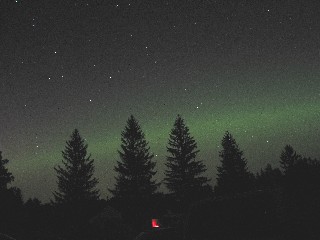
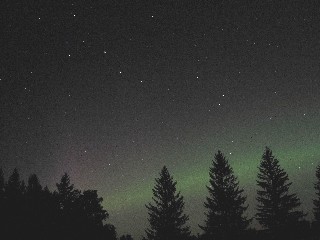
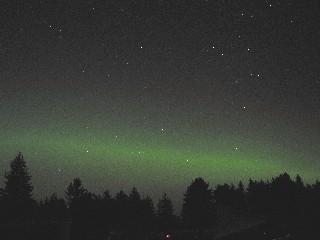
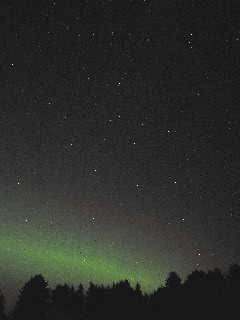
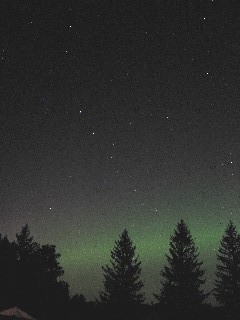
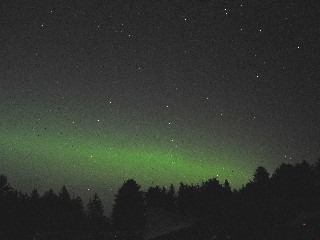
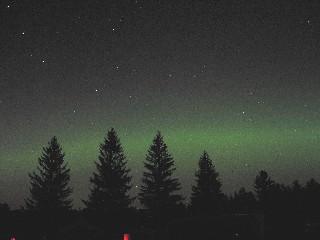
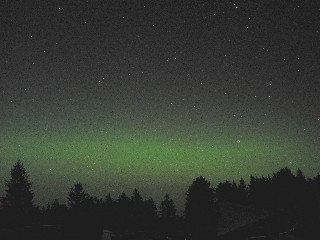
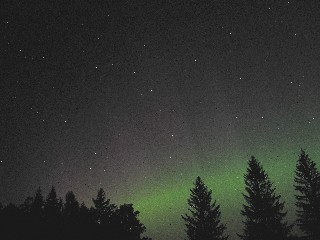
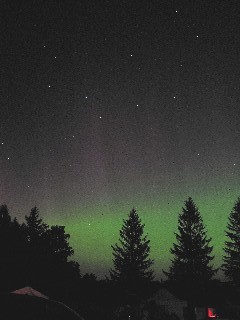

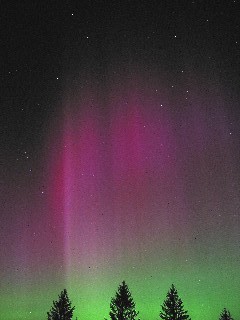
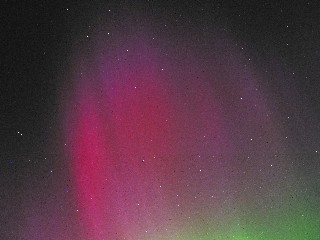

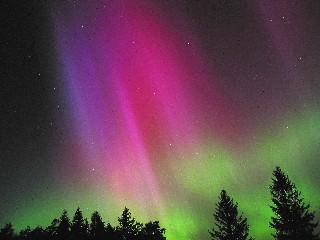
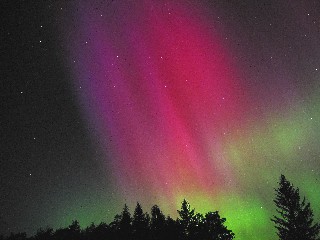
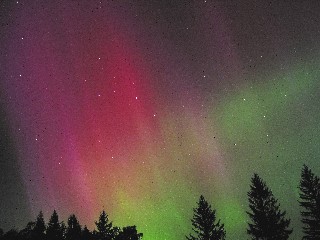
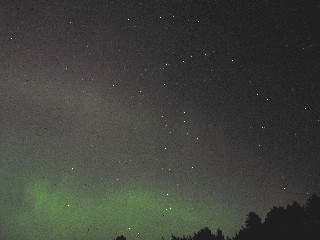
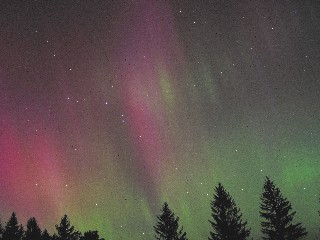
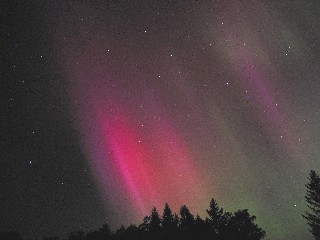
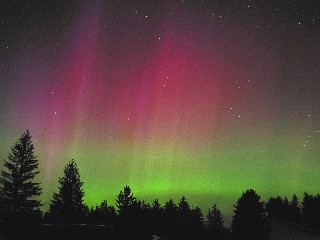
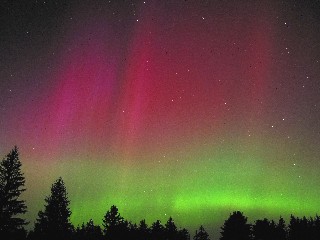
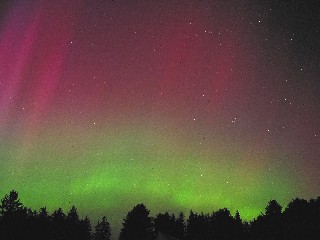
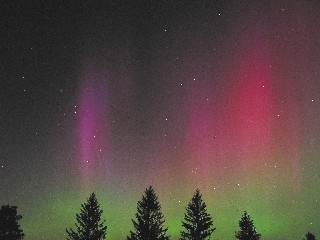
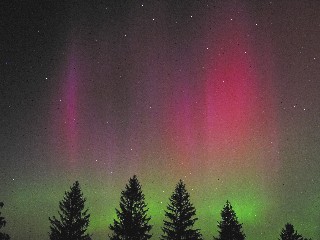
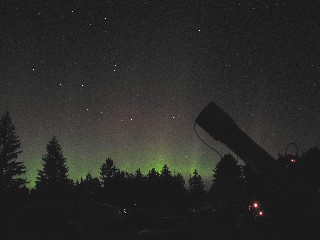
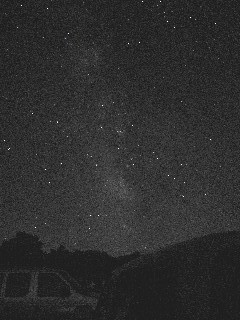
September 7, 2002 Aurora
Willingboro Astronomical Society
www.wasociety.net
Last updated 9.24.2002
I saw this grand aurora from the Black Forest
Star Party, along with about 500 other attendees. I thought I had seen aurora at
their best from Canada over the years but nothing prepared me for this one. It
had more color and more intensity than anything I had seen before.
The circumstances were excellent. The site of the BFSP (Cherry Springs State Park in north-central PA) is one of the darkest sites on the east coast of the USA so there was essentially no light pollution or light domes. We also had an exceptionally clear night and the aurora started and ended during full darkness. This aurora stayed in the north so all shots are toward northeast and northwest. It had two distinct outbursts as you can see from the images.
Although I have been shooting the night sky for many years, the images below are a result of serendipity, not my skills, because I was using a new (to me) digital camera. It is a Cannon G2 I had been using for several months for daytime shots so I was familiar with its feature set but had never attempted night shots. I used the following camera settings for all the shots on this page:
- Focal ratio at 2.0 (the widest possible setting for this camera).
- Duration at 15 seconds (the maximum possible for this camera).
- ISO equivalency (gain) at 100.
- Format was set at JPEG with minimal compression.
- Focal Length at the "wide angle" setting of the zoom lens (equivalent to 35mm for a film camera).
I used a tripod, of course, and simply took lots of shots - not knowing how they would turn out. The images in this page are scaled down from 2272x1704 pixels (4.3 mega pixels). to 320x240 pixels so they contain only a small fraction of the "data" in the original images. The full-resolution images are spectacular - even Mizar and Alcor are easily resolved. All images were processed with the same parameters so any variation in brightness from one image to another is real.
I have marked some of the more interesting images "downloadable" so if you click on the image, it will download a larger-resolution version. I didn't do this for all the images because we need to conserve space on our web server. I also reduced the downloadable images to 1000x750 to save more space.
As a final comment - this was essentially a perfect "star party" aurora because it only "interfered" with deep-sky observing for about an hour and provided a great diversion. Also, it was confined to the northern hemisphere - the southern hemisphere remained very dark.
- Lane